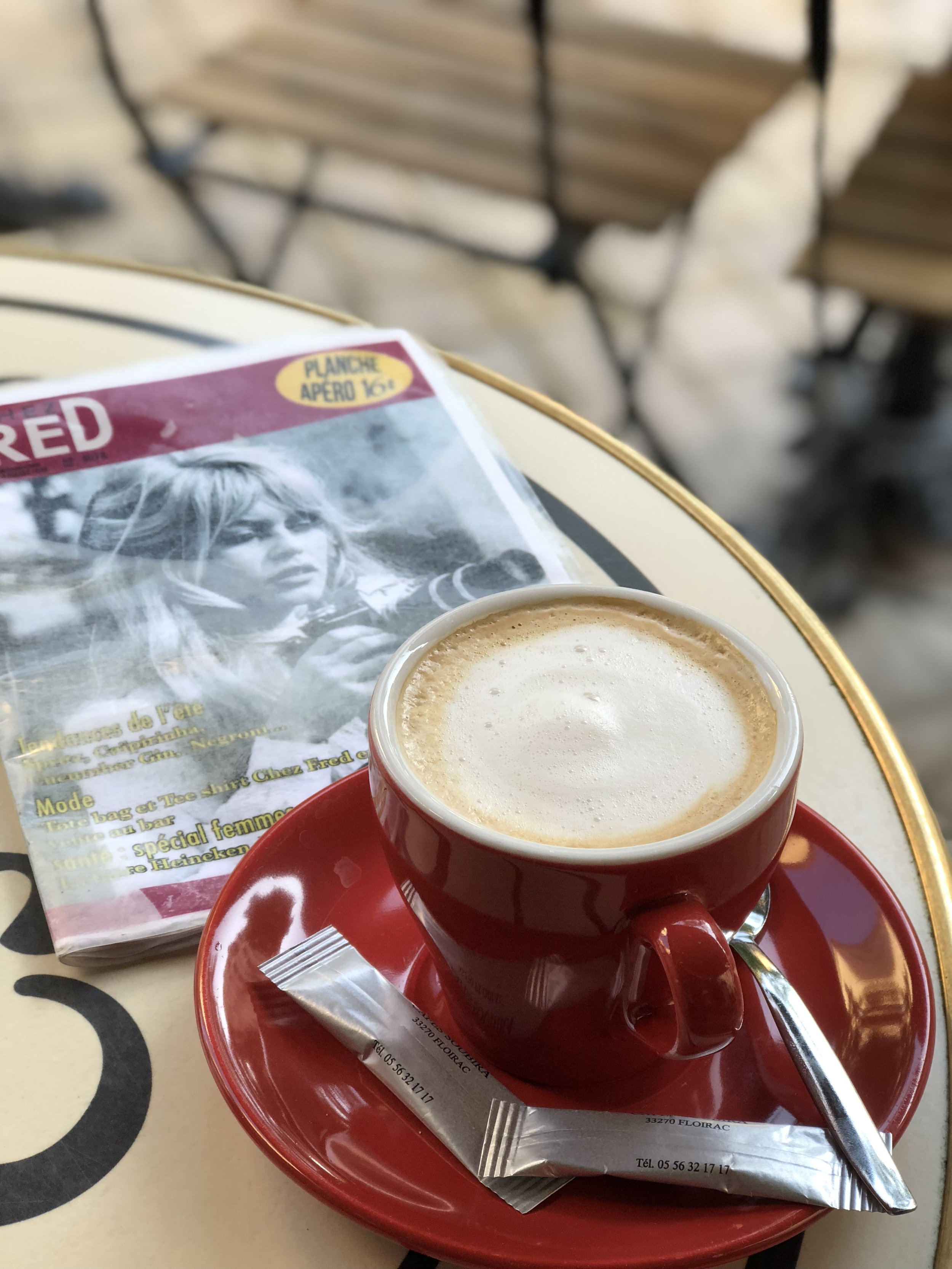Paris Travel Tips: Ordering Coffee, Croissants & Bread Like A Local
When I ask friends if there’s anything special they want to do while visiting Paris, a common response is something like “oh, you know, just sit around in cute cafes and eat amazing pastries”. It’s a goal I’m always happy to support.
Paris’ cafe culture is unmatched, and one of the simplest ways to enjoy a slice of French life is to park yourself at a local bistro, slowly sip a café creme, tear into a flaky croissant, and watch Parisian life go by. I try to do it regularly (otherwise, what’s the point of living in Paris?!)
But — ordering coffee, croissants, and even baguettes is not quite as simple as it looks. Here’s a few tips (learned through months of trial & error) to make sure you get the best of the best while in Paris:
The best part of waking up: a frothy café creme.
Ordering Coffee:
Ordering coffee in Paris can throw foreigners for a loop. Café allongé, café creme, noisette, double café… It’s taken me months to figure out what is what. Here’s a quick tutorial:
If you typically drink a cup of black coffee… order a “cafe allongé” (basically a shot of espresso with hot water).
If you typically drink a cafe au lait or a latte… order a “cafe creme” (there’s no actual cream in it, just coffee & steamed milk).
If you typically drink a cappuccino or macchiato… order a “noisette” (a shot of espresso with a splash of hot milk. Some places will give you a little pitcher of milk on the side, to add to your liking).
If you see “cappuccino” on the menu, be warned that it’s usually a very large coffee drink served with lots of milk and a mountain of foam. Unlike American-style cappuccinos which are smaller, with less milk than a latte, the French-style capp is the opposite! Unless of course you order it at an Italian restaurant ;)
And espresso is just called “un cafe”. So naturally, a double cafe = double espresso.
In the summertime, some places will serve café glacé (iced coffee), but it tends to be pretty weak (coffee with ice added). In the more hipster coffee shops, they know how to make it strong.
For decaf coffee or espresso just add “déca” to your order (ie: un café déca)
“Café Gourmand” is something you’ll see on dessert menus in France, and is usually a shot of espresso served with a few mini desserts. Each restaurant comes up with their own rotating combo of desserts. It’s a must!
Cafe Gourmand: coffee with mini desserts.
Ordering Croissants:
At the boulangerie, you’ll see croissants of various shapes & sizes. Which one will give you the flaky, buttery croissant experience of our dreams?
Believe it or not, a “croissant” is made with margarine and is usually shaped like a crescent, while a “croissant au beurre” is the real deal, made with butter and usually more diamond shaped. Don’t be fooled!
Ordering Bread:
A fresh “tradi” from the farmers market in Chablis
There’s few things more luscious than ripping into a hot, crusty baguette — crisp on the outside and spongey on the inside. And thankfully, it’s pretty difficult to find bad bread in France.
So, you simply walk into a boulangerie and ask for a baguette, right? No! A “baguette” is typically softer (for making sandwiches or giving to kids as a snack). The crusty loaf you want is called a “tradition” or “tradi” as the Parisians say. Baguettes are perfectly tasty, but a Tradition is a more textured, sophisticated loaf that the French are famous for.
Another surprise: it’s totally okay to ask for a half-loaf of baguette or tradition — it’s called a “demi”. So — ask for “un demi-tradition” and they will simply slice a loaf in half for you, no questions asked.
What tips have you picked up while traveling in France? Feel free to comment below!




